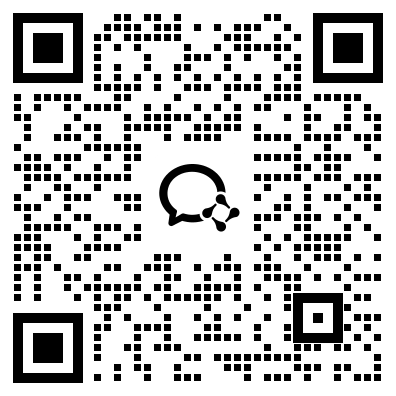自考《英语词汇学》模拟试卷(2)答案
I.
1. T
2. T
3. F
4. F
5. T
6. T
7. F
8. T
9. T
10. T
II.
1. a minimal free from of a language; a sound unity; a unit of meaning; a form that can function alone in a sentence
2. logical
3. word - formation; affixation; compounding; conversion
4. word - forming; derivational affixes; prefixation; suffixation
5. monosemic; polysemy
6. diachronic approach; synchronic approach
7. radiation; concatenation
8. sound; spelling; meaning
III.
1. steed
2. gee - gee
3. ripe
4. mature
5. effective
6. efficient
7. fatigued, children
8. tired, kids
9. declined
10. refused
11. rancid
12. addled
13. Penalties
14. fines
15. rebuked
16. accused
IV.
1. Word: The definition of a word comprises the following points: (1) a minimal free form of a language; (2) a sound unity; (3) a unit of meaning; (4) a form that can function alone in a sentence. Therefore, a word is a minimal free form of a language that has a given sound and meaning and syntactic function.
2. Reference: Reference is the relationship between language and the world. By means of reference, a speaker indicates which things in the world are being talked about In other words, only when a connection has been established between the linguistic sign and a referent does the sign become meaningful. The reference of a word to a thing outside the language is arbitrary and conventional. Although reference is a kind of abstraction, yet with the help of context, it can refer to something specific.
3. Semantic field: The massive word store of a language like English can be conceived of as composed around a number of meaning areas, some large, others smaller. Viewing the total meaning n this way is the basis of field theory. According to Trier's vision of fields, the whole vocabulary can be divided up into fields. Words in each field are semantically related and define one another. It is a general brief that the meaning does not exist in the word itself, but it rather spreads over the semantic field and help pin down the meaning. The vocabulary of a language is in constant change: old items drop out, new items come in, and as the new replace the old, so the internal relations of the whole set alter. Another point worth noting is that the semantic field of the same concept may not have the same members in different languages.
4. Monolingual and bilingual dictionaries: Monolingual dictionaries are written in one language. That is the headword or entries are defined and illustrated in the same language. The monolingual dictionary is rather a late development because the earliest dictionaries were all bilingual. Bilingual dictionaries involve two languages. The main entries are generally defined or explained in the same language with translations; Another kind of bilingual dictionary is in which the Chinese words and expressions are translated into English.
V.
1. R
2. I
3. E
4. A
5. M
6. G
7. P
8. J
9. B
10. K
11. S
12. C
13. O
14. F
15. H
16. T
17. L
18. N
19. Q
20. D
VI.
1. (1) Old English (450 ~ 1150)。 After the Romans, the Germanic tribes called Angles, Saxons, and Jutes came in great numbers. Soon they permanent control of the land, which was to be called England. Their language, historically known as Anglo - Saxon, dominated and almost totally blotted out the Celtic. Now people generally refer to Anglo - Saxon as Old English. The introduction of Christianity had a great impact on the English vocabulary. In the 9th century the land was invaded again by Norwegian and Danish Vikings. With the invaders, many Scandinavian words came into the English languages. Old English has a vocabulary of about 50000 ~ 60000 words. It was a highly inflected language just like modern German. Therefore, nouns, pronouns, adjectives, verbs, and adverbs had complex endings or vowel changes, or both, which differ greatly from the language that we use today. (2) Middle English (1150 ~ 1500)。 The Norman Conquest in 1066 started a continual flow of French words into English and Norman French became the polite speech. But by the end of the 13th century, English gradually came back. During this period, Britain had trade relations with Holland and as a result, as many as 2500 words of Dutch origin found their way into English. (3) Modern English. Modern English began with the establishment of printing in England. During the Renaissance, enormous numbers of Latin words became part of English vocabulary. In the mid - seventeenth century, British tentacles began stretching out to every corner of the globe, thus enabling English to absorb words languages of the world. Since the beginning of this century, thousands of new words have been created to express new ideas, inventions, and scientific achievements. In modern English, word endings were mostly lost with just a few exceptions. It can be concluded that English has evolved from a synthetic language to the present analytic language from all major.
2. According to the grammatical functions, idioms may be classified into five groups:
(1) Idioms nominal in nature. Idioms of this class have a noun as the key word in each and function as a noun in sentence.
(2) Idioms adjectival in nature. All the idioms of this kind function as adjectives but the constituents are not adjectives.
(3) Idioms verbal in nature. This is the largest group of all. The structures of such idioms are quite complex and thus can be subdivided into phrasal verbs and other verb phrases. Phrasal verbs are idioms which are composed of a verb plus a prep and / or a particle.
(4) Idioms adverbial in nature. This class contains numerous prepositional phrases, which in nature are either adjectival or adverbial and in many cases have both functions at the same time.
(5) Sentence idioms. All idioms of this category are complete sentences. They are mainly proverbs and sayings, including colloquialisms and catchphrases. As far as sentence types are concerned, they embrace declarative, interrogative, imperative and exclamative sentence. In terms of complexity they can be further divided into simple, compound and complex sentences.












